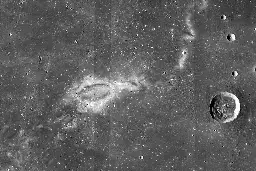Shields Up! Lunar Swirls Arise from Ancient Underground Force Fields on the Moon
Shields Up! Lunar Swirls Arise from Ancient Underground Force Fields on the Moon
Wispy whorls on the moon’s surface are as lovely as they are strange. Scientists are starting to unravel their origins

For centuries, a mystery has been hiding in plain sight on the surface of the moon: bright, sinuous swirls that sprawl across thousands of square kilometers of the lunar landscape, visible through telescopes on Earth but defying explanation.
Now, at last, scientists are starting to understand them—and it turns out they’re weirder than anyone would have imagined.
These enigmatic “lunar swirls” are the result of ancient underground force fields that shield the moon from barrages of subatomic particles blasted out by the sun. Each swirl is a meandering blanket of pristine rock interlaced with darkened, radiation-zapped material.
Unlike Earth, the moon today doesn’t have a global magnetic field. It had a weak one billions of years ago, when it was still molten, but that died down quickly as the moon cooled. As rocks solidified on the surface, however, they were able to retain some of that ephemeral magnetism, creating more enduring localized regions with a somewhat stronger magnetic field. Given their ancient origin, these are called “relic” fields, and many are associated with lunar swirls.
The actual reason for this association became clear about a decade ago, when scientists published results in Nature Communications that showed that the relic fields around swirls, weak as they are, can still be strong enough to slightly deflect the solar wind impinging on the lunar surface. This wind consists of subatomic particles from the sun, and the trajectories of electrically charged particles such as electrons and protons can be changed by magnetic fields.
Where the relic fields are stronger, the particles veer off to the side, darkening the ground where they fall—and leaving curiously curlicue patterns in the more pristine magnetically shielded surface.